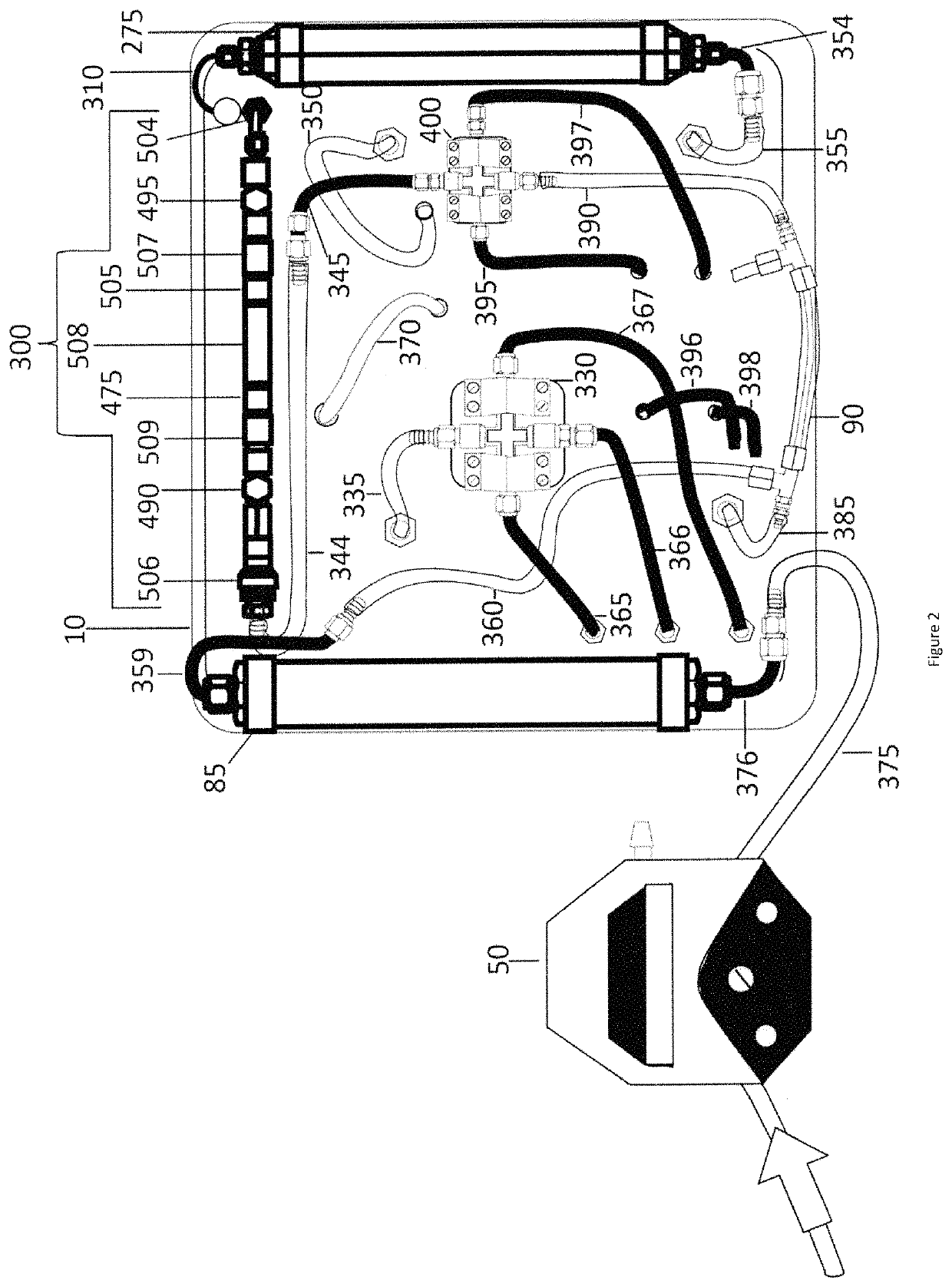Equilibrator for rapid and continuous detection of a gas in a liquid
a liquid gas and liquid equilibration technology, applied in water/sewage treatment by degassing, water treatment parameter control, transportation and packaging, etc., can solve problems such as posing explosion hazards, affecting the detection accuracy, and complicated comparisons
- Summary
- Abstract
- Description
- Claims
- Application Information
AI Technical Summary
Benefits of technology
Problems solved by technology
Method used
Image
Examples
examples
[0082]Embodiments of the invention may be used to separate or equilibrate most any gas contained within most any liquid. In the following examples, the separated gas will be a hydrocarbon, and more specifically methane, the liquid will be water. The water tap closest to each wellhead being sampled that did not pass through any treatment system was used to collect dissolved gas ground water samples and monitor field parameters (pH, specific conductance, dissolved oxygen, oxidation reduction potential, temperature). Samples were collected by securing polyethylene tubing (for example Nalgene 489 LDPE ⅜″ ID No. 14476-120) to the water tap and placing into an inverted 60 mL serum bottle (for example Wheaton Science #223746) containing a 0.5 g trisodium phosphate (TSP) pellet (sodium phosphate dodecahydrate, ACS, 98-102%) to maintain pH≥10 for sample preservation. The inverted sample bottle and water line were submerged in a 5-gal plastic bucket containing purged ground water. The bottle ...
PUM
| Property | Measurement | Unit |
|---|---|---|
| interfacial area | aaaaa | aaaaa |
| holding time | aaaaa | aaaaa |
| temperature | aaaaa | aaaaa |
Abstract
Description
Claims
Application Information
 Login to View More
Login to View More - R&D
- Intellectual Property
- Life Sciences
- Materials
- Tech Scout
- Unparalleled Data Quality
- Higher Quality Content
- 60% Fewer Hallucinations
Browse by: Latest US Patents, China's latest patents, Technical Efficacy Thesaurus, Application Domain, Technology Topic, Popular Technical Reports.
© 2025 PatSnap. All rights reserved.Legal|Privacy policy|Modern Slavery Act Transparency Statement|Sitemap|About US| Contact US: help@patsnap.com



